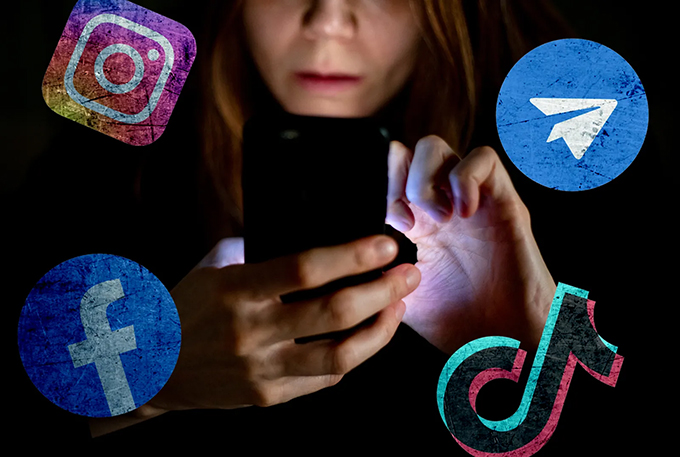 hxxxxxxxxxxxxxxxxxxxxxxxxxxxxxxxtrPreview changes in AMP (opens in new window)
hxxxxxxxxxxxxxxxxxxxxxxxxxxxxxxxtrPreview changes in AMP (opens in new window)
Remember The Matrix or Batman Forever ? In these dystopian movies, technological gadgets were able to read people’s desires, collect that information, and then use it to shape or predict people’s future behavior at will.
In both science fiction stories, the villains managed to lull the citizens to sleep, who remained perpetually connected either to television or to the parallel reality, without putting up any resistance. Anesthetized by entertainment. In science fiction, the villains found a source of counterpower, the superheroes capable of revealing the secret and freeing the citizens with their superpowers.
Would it be possible to build a control device in the 21st century that would numb and control the desires, social libido and identity construction of an entire generation of young people? Would it be possible to do so outside of science fiction?
The research we have carried out over the last six years (2018-2024), with a pandemic in the middle, and whose results have been published in the book Segrestats per les xarxes (“Kidnapped by the Networks”, Eumo Editorial), show that science fiction has fallen short.
In the history of mankind, no power, no channel, no product, no service, no government has ever had the ability to control the information it receives, the movements it makes, the messages it sends, and the tastes and desires of 99% of an entire generation. Not even religions, the empires of past centuries or the great global stars associated with sports or music have had the power that social networks have today.
Young people (caught) in the networks
Do you know anyone under 30 who isn’t glued to Instagram , TikTok , WhatsApp or YouTube day and night ? On a social network like Instagram , the young people who participated in our studies spend an average of 9 hours a week; on WhatsApp , another 9; on YouTube , more than 7, and on TikTok , almost 9 more hours. In total, more than 34 hours a week hooked on content they don’t even remember, which passes by their screens in an infinite scroll and makes them lose track of time.
34 hours a week! Many people believe that they spend less time on social media than they actually do. Young people are not adequately informed on social media. They themselves declare that their main social media ( Instagram , WhatsApp and TikTok ) are not used as information channels. In fact, more than 54% of them say that social media is a place of misinformation.
They are not spaces for work or for developing their studies, nor platforms for seeking social relationships. Young people use social networks following values imposed by the platforms themselves, which only seek to make them spend more time on them. Instagram is used to share photos and videos with friends and to see what their contacts do in their daily lives. WhatsApp is used as a communication channel with friends and family, and also to share photos and videos. TikTok and YouTube are platforms for entertainment, personal curiosity and following famous people. And what is the problem?
Share until you die
The first problem is the change in social value in the universe of communication: if you don’t share it, it doesn’t exist and, therefore, you haven’t lived it. This mechanism is the main vehicle for kidnapping young people’s attention. They are slaves to what their contacts publish, but, at the same time, they are slaves to the publication of their own life (and the reactions it generates).
A life that has to be exposed in order to be valid. That is why the main uses are that: publishing, following, watching from afar. But doing it exclusively through these channels creates two additional problems (among many other mental health problems, such as anxiety, depression, insomnia or eating disorders, which we also discuss in the book).
The second problem is the loss of the ability to socialize, to dialogue, to interact, to empathize with people. The mediation of the screen in social relationships has been shown to cause a deterioration in young people’s communication skills : they even panic about making or receiving a phone call.
Filling the network of others with (own) value
The third problem is feeding the system of domination from a servile perspective. Because filling the social network with value, own content and individual data, only makes the work of the platform easier: to know its subjects better to maintain the kidnapping. Or slavery, since the youth work for the platform for free.
It is because of this logic that young people, when we began our studies in 2018, were still critical of the transfer of data and the control of their privacy by platforms. According to the group interviews we have conducted in recent years, this transfer of autonomy, freedom, and identity is now understood as a quid pro quo relationship . A symbiosis from which both parties benefit.
If this is the general attitude of young people towards social networks, we are facing the extinction of the “red pills” of the Matrix , those that allowed us to escape from kidnapping and see reality.
Author Bios: Cristina Fernandez Rovira is Professor of Journalism and Communication, at the University of Vic – Central University of Catalonia and Santiago Giraldo Luque is Professor of Journalism at the Autonomous University of Barcelona
